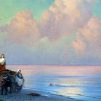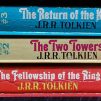
In June 1997, the world learned the story of a wizard boy with a scar on his forehead, which was later translated into nearly 80 different languages. Seven Harry Potter books have been published over the course of ten years, selling over half a billion copies. The writer J.K. Rowling has managed to amazingly combine the genres of fantasy and adventure, detective and love story, thriller and mysticism. Both children and adults have become fans of Harry Potter. Books are still the subject of admiration and outrage.
Even though the last book to date was published in 2007, each new generation of 8-9-year-old children plunges headlong into the world of Harry Potter.
So how huge is his influence on our humble Muggle world?
Harry Potter and Parenting
Those who read books or watched films about Harry Potter are more open, empathetic people, less prone to prejudice against any minorities – at least, to such conclusions came the researchers who published the results of their observations in the article “The greatest magic of Harry Potter: Reducing prejudice” in the journal of Applied Social Psychology in 2014.
Experimenters have put forward the theory that J.K. Rowling’s books cultivate tolerance in people. To prove it, they conducted a series of studies. The first experiment involved 10-year-old students of an Italian school (13 boys and 21 girls). Previously, the children were asked questions about how they relate to migrants. Depending on this, the students were divided into groups – and in front of each, the teacher read aloud an excerpt from the Harry Potter book.

The first group listened to stories related to the topic of the lesson, for example, the moment where Draco Malfoy called Hermione a “mudblood”, and one of the best sorceresses in the school felt humiliated, while her friends were angry about the incident and they tried to intercede for her friend.
Others were read “neutral” passages, such as where Harry bought a wand or played Quidditch. The results showed that after reading and discussing the emotional part of the book, children began to answer the question of whether they wanted to live and study with migrants from other countries in a completely different way.
Another study was conducted among university students in the UK. Another experiment was related to the attitude towards refugees and only confirmed the results of previous studies. Thus, scientists have put forward the theory that readers, as a rule, associate themselves with the positive characters of the book and react sharply to injustice towards others.
Harry Potter and Children’s Literature
The Harry Potter Effect is the name given to the changes that have brought books about the wizard to the world of children’s literature. Before the appearance of J.K. Rowling’s works, it was believed that books for children should be short (no more than 300 pages), kind (so as not to injure the child), straightforward (no intrigue and ambiguity). Throughout the book, the hero, as a rule, did not grow up, and the number of scenes was limited in order not to confuse children.

The writer completely changed the idea of children’s literature. As it turned out, children do not care at all how many pages there are in a book. Some stories about Harry Potter totaled more than 800 pages, but the little fans of the wizard did not abandon the novel in the middle but continued to read with enthusiasm.
A study by the National Endowment for the Arts found that thanks to Potter’s popularity, the number of pages in children’s books increased 37% from 1996 to 2006. But it was once believed that they should not be longer than 60 thousand words.
Usually, the hero of children’s literature was predictable even for a child. The course of events was easily guessed in the story, and, as a rule, the expectations of the readers were met. Rowling broke this scheme – it is difficult, even for an adult, to guess what will happen to Harry Potter next.
Some of the plot lines were not only unpredictable but also quite dark – especially when the characters died. The critics were sure that the child would be upset and put down the book, but in reality, the children only wanted to read more. This dissimilarity of the Harry Potter story to the other children’s literature that was presented on the market, in many ways, became the key to the success of the young little magician.
Before the advent of Harry Potter, literature was mainly divided into children’s and adult. The young wizard also changed this rule. For the first time, the same book could be seen in the hands of a 7-year-old child and a 35-year-old adult, and this was not surprising.
Harry Potter and Pop Culture
Between novels, the stalls were littered with merchandising featuring the young wizard and other characters in the story. For the first time, the book industry became so deeply intertwined with pop culture, and the release of a new book turned into a show in which even the smallest children took part.
In 2000, the release of Harry Potter and the Goblet of Fire in many countries around the world became a real event in honor of which themed events were held. Barnes & Noble, the oldest and largest American bookstore chain, has transformed part of its Bloomington store into “Potter’s City.” There was even a forest in it, and guests were greeted by a sign, “Welcome to Hogwarts.”

At Borders Bookstore in Westbury, copies of the new book were magically shown to visitors by a magician at 12:01 am on the day of the start of sales. Another branch of the store in Massachusetts threw a giant pajama party, sending invitations to 500 children.
Chapter 11 Books, an Atlanta store, put on a show starring a Harry Potter look-alike. Another bookstore, Powell Books in Portland, went on sale at midnight sharp and promised everyone who came to pick up a book that night in their pajamas a 20% discount.
The list of those who pre-ordered on Amazon was measured in hundreds of thousands of people. The company invited its first 250,000 customers to upgrade to fast delivery so that the book would be at their home in the morning after the start of sales.
The party reached even greater proportions in 2007 ahead of the release of the latest Potter book, Harry Potter and the Deathly Hallows. Bookstores in New York have prepared Golden Snitch and Butter Beer drinks for visitors. Buyers disguised as the heroes of the book came a few hours before the start of sales just to chat with fans like themselves.
Harry Potter and New Words
Children dream of being like Harry Potter and his friends – they dress up as their favorite characters, fight with magic wands and try to fly on brooms. Young people are not lagging behind either. In 2005, students at Middlebury College in Verona decided to play a fictional game from the book – Quidditch.
Since then, the number of people willing to run with brooms and throw balls has only grown. In 2012, a world cup was held, in the struggle for which teams took part not only from the USA but also from Canada, Great Britain, France, and Australia. In 2019, the college released a collection of rules of the game for elementary and high schools.
Not only the sport entered into real life, but the term “Quidditch” itself, which was added to the English language by the Oxford Dictionary in 2017. This is not the first invented word to become official: in 2002, a term from the book “Muggle” (an ordinary person with no magical powers) was added.
I am sure that many of you have read or at least watched Harry Potter. And someone, perhaps, even grew up along with the young wizard who changed our world for the better.





